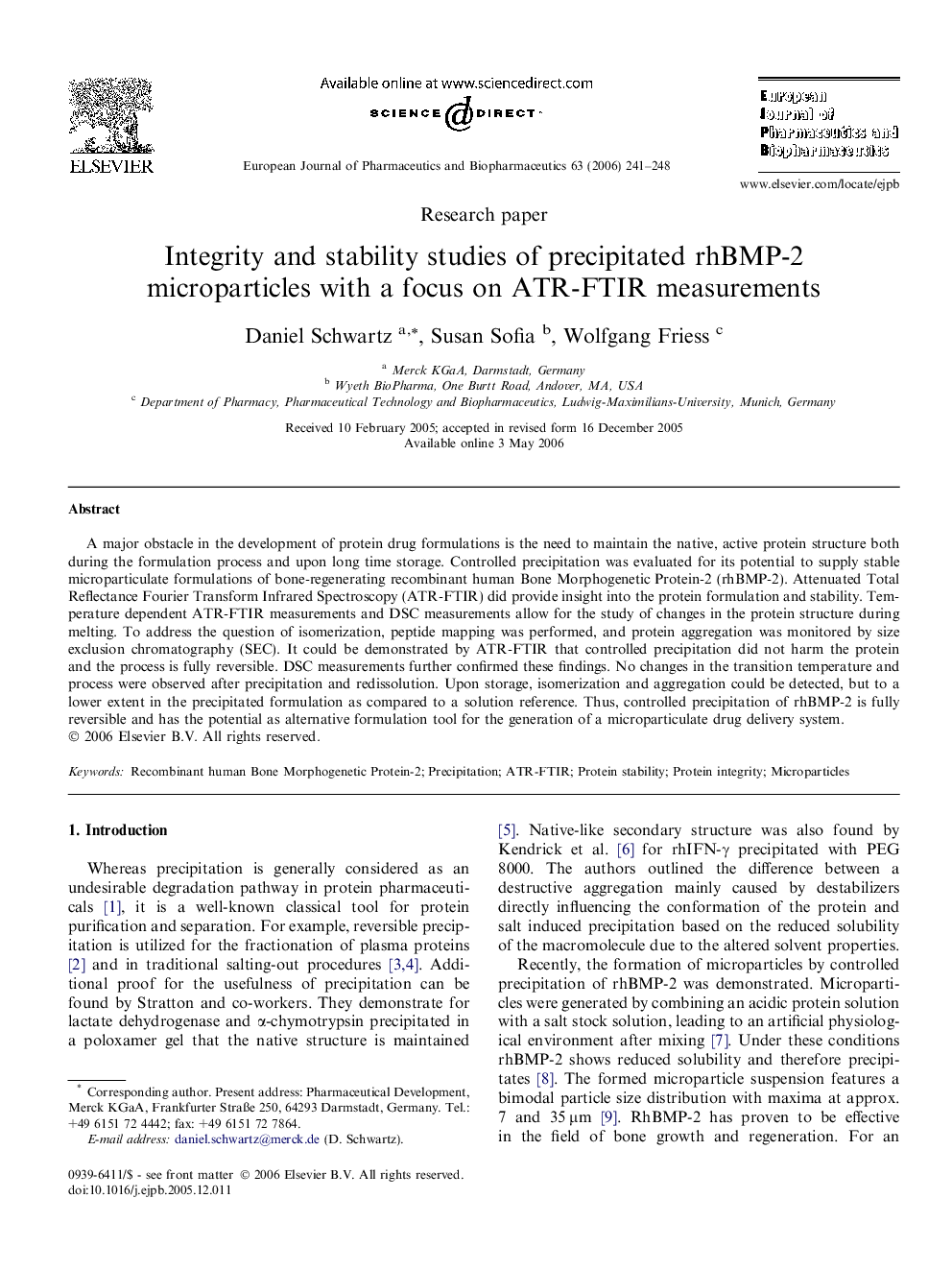| Article ID | Journal | Published Year | Pages | File Type |
|---|---|---|---|---|
| 2085002 | European Journal of Pharmaceutics and Biopharmaceutics | 2006 | 8 Pages |
A major obstacle in the development of protein drug formulations is the need to maintain the native, active protein structure both during the formulation process and upon long time storage. Controlled precipitation was evaluated for its potential to supply stable microparticulate formulations of bone-regenerating recombinant human Bone Morphogenetic Protein-2 (rhBMP-2). Attenuated Total Reflectance Fourier Transform Infrared Spectroscopy (ATR-FTIR) did provide insight into the protein formulation and stability. Temperature dependent ATR-FTIR measurements and DSC measurements allow for the study of changes in the protein structure during melting. To address the question of isomerization, peptide mapping was performed, and protein aggregation was monitored by size exclusion chromatography (SEC). It could be demonstrated by ATR-FTIR that controlled precipitation did not harm the protein and the process is fully reversible. DSC measurements further confirmed these findings. No changes in the transition temperature and process were observed after precipitation and redissolution. Upon storage, isomerization and aggregation could be detected, but to a lower extent in the precipitated formulation as compared to a solution reference. Thus, controlled precipitation of rhBMP-2 is fully reversible and has the potential as alternative formulation tool for the generation of a microparticulate drug delivery system.
